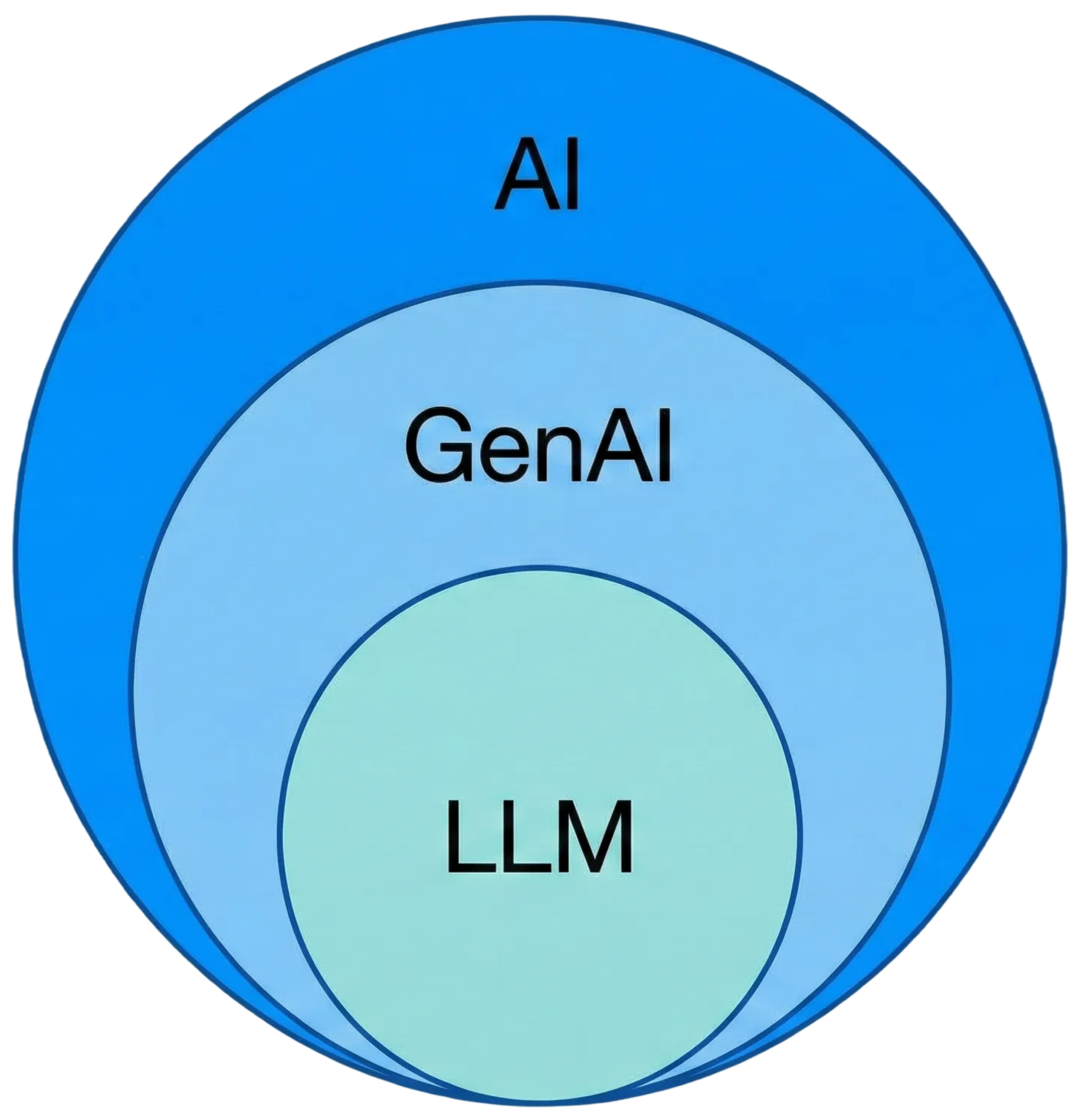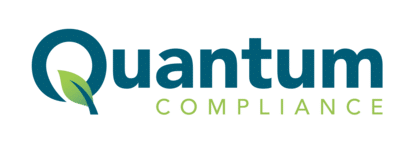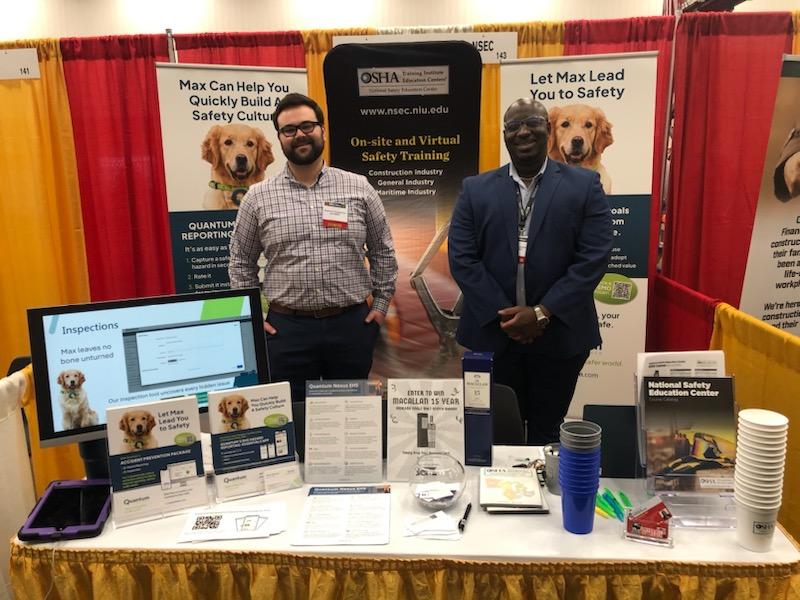On November 19th, 2025, we gathered to discuss a shift that is transforming the landscape of Environment, Health, and Safety (EHS): the move from static paper trails to dynamic, data-driven patterns.
If you missed the presentation, the core message went beyond simple digitization. While taking a physical paper and turning it into a PDF is a start, it doesn’t solve the core problem of data accessibility. We are talking about leveraging Artificial Intelligence not just to structure data, but to analyze it, generate solutions, and actively monitor risks in ways that were previously impossible.
Here is a recap of how AI can transform your EHS operations and how you can apply these tools today.
Defining the Terminology: What Are We Talking About?
Before we dive into solutions, it is helpful to clarify exactly what we mean when we say “AI,” as the terms are often used interchangeably.
- AI (Artificial Intelligence): This is the broad discipline of computer science dedicated to creating systems that can perform tasks that typically require human intelligence. Examples include spam filters, shopping recommendations, or detecting tumors in x-rays.
- GenAI (Generative AI): This is a subset of AI that creates new content, such as text, images, audio, or code.
- LLM (Large Language Model): A specific type of GenAI that can “understand” and generate human language. This is the technology behind tools like ChatGPT, Google Gemini, and Claude.

Reality Check: What AI is Good (and Bad) At
To use these tools effectively, you have to understand their limitations. AI is not a “magic wand” that can do everything.
What AI is Good At:
- Processing Massive Data: It excels at taking huge amounts of unstructured info (like text or voice) and organizing it.
- Pattern Recognition: It can spot trends or anomalies (like tumors in x-rays or unsafe behaviors on camera) faster than a human.
- Drafting Content: It is excellent at generating first drafts of text, code, or images.
What AI is Bad At:
- Nuance and Context: It cannot understand nuance and context the way a human does.
- Contextual Blindness: It often lacks the broader situational awareness required for complex decision-making.
- Fact-Checking: It can suffer from “hallucinations,” meaning it can confidently present false information as fact.
Quick Wins: DIY AI for the EHS Professional
You can start using widely available tools right now to make your daily life easier.
Instant Toolbox Talks: Instead of writing a talk from scratch, copy a segment of a regulation or an SOP. Prompt an LLM to “Write a 5-minute, easy-to-understand toolbox talk script for frontline workers based on this text”.
Custom Safety Visuals: Need a poster on handwashing? Instead of searching for generic clip art, use image generation tools (like Canva or Gemini) to create a specific safety poster that encourages employees to protect themselves and their team.
Categorizing Data with Google Sheets: If you have a massive list of historical safety observations (e.g., hundreds of rows of text), manually categorizing them takes hours. You can now use AI directly inside Google Sheets to analyze a whole list of data, asking it to categorize each observation into specific buckets (like “PPE,” “Slip/Trip,” or “Electrical”) instantly.

Quantum’s AI: Built for EHS Compliance
When evaluating tools for Environment, Health, and Safety (EHS) management, the difference between a general-purpose Large Language Model (LLM) and a specialized tool like Quantum AI is significant. While general AI offers broad utility, it lacks the specificity and safety mechanisms required for high-stakes industrial environments.
Here is a breakdown of why Quantum AI is the better choice, addressing three critical problems inherent in general AI.
Problem #1: AI is only as good as the data you feed it
The reliability of any AI output is directly dependent on the quality of its input.
- General AI (Public LLMs): Public models are trained on the “entire internet.” While this provides a vast breadth of information, it is largely unverified, general, and often irrelevant to specific industrial contexts. Relying on this data for critical safety decisions can lead to generic advice that fails to account for specific site hazards or nuances.
- Quantum AI (Specialized): Quantum AI is trained exclusively on verified EHS frameworks and specialized industrial data. By limiting the training set to high-quality, domain-specific sources, the AI ensures that its outputs are grounded in proven safety methodologies rather than internet generalizations.
Problem #2: AI can hallucinate
“Hallucination” in AI occurs when a model confidently generates false or nonsensical information. In a safety context, a hallucination could result in dangerous non-compliance or incorrect hazard identification.
- General AI (Public LLMs): Most public tools lack a built-in verification step for the user within the workflow. They generate an answer, and it is often up to the user to copy, paste, and manually verify it elsewhere, which leaves room for error and acceptance of false data.
- Quantum AI (Specialized): Quantum AI utilizes the “Sandwich Method” to keep the human in the loop. Because AI suffers from contextual blindness and can hallucinate, it cannot be allowed to run on autopilot, especially in high-stakes fields like EHS. To leverage these tools safely, Quantum AI enforces this workflow:
- The Top Bun (Human): You set the context and provide the data.
- The Meat (AI): The AI processes the data and creates the draft.
- The Bottom Bun (Human): You verify the claims and ensure accuracy before submitting the record.

Problem #3: General AI is not integrated with your EHS workflow
Efficiency and compliance rely on seamless integration. Using a tool that sits outside your daily system adds friction and reduces adoption.
- General AI (Public LLMs): General AI is completely disconnected from your EHS workflow. To use it, an EHS professional must leave their system of record, open a separate tool, prompt it, and then migrate data back. It lacks context about your specific regulations or previous incidents.
- Quantum AI (Specialized): Quantum AI is integrated directly within the Quantum EHS system and workflow. It has access to specialized databases of regulations to reference immediately. Because it lives where the work happens, it can streamline tasks like report generation or risk assessment without requiring the user to switch platforms or manually feed it regulatory context.
| Feature | General AI (Public LLMs) | Quantum AI (Specialized) |
| Training Data | The entire internet (general, unverified) | Verified EHS frameworks and specialized industrial data |
| Sandwich Method | None | The user has a chance to double-check all generated information before submitting it to the record |
| Integrated with EHS | Disconnected from your EHS workflow | Integrated within Quantum’s EHS system and workflow, with specialized databases of regulations to reference |
This specialized approach ensures that while you benefit from the speed of AI analysis, you maintain the crucial “Bottom Bun” of verification to guarantee safety and compliance.
Here is how we are applying this specialized technology today:
1. Inspection AI: Automating the Analysis
The Problem:
Inspection forms can be incredibly dense, sometimes over 100 questions long. Manually reviewing every finding to determine the severity, regulatory violation, and next steps is time-consuming and prone to human error, slowing down the transition from identification to correction.
The Solution:
Summarization: Quantum’s AI summarizes the inspection form, so users don’t have to manually analyze the document one question at a time.
Regulatory Alignment and Corrective Actions: Quantum’s AI defines exactly which OSHA regulation a specific finding is violating, removing the guesswork from compliance. It then suggests corrective actions to resolve the non-compliant issue.
Risk & Hazard Classification: When filling out an inspection form, automatically generate finding descriptions, classifies the hazard, and assigns a risk level.
The Benefit
It drastically reduces administrative burden while ensuring every finding is mapped to the correct regulation and assigned a clear action item, ensuring nothing slips through the cracks.
2. SDS OCR: From Unstructured to Structured
The Problem
One of the biggest headaches in EHS is managing Safety Data Sheets. These are complex documents with 16 sections. If you need to search for “all carcinogenic products in my facility,” a standard database of static PDF files won’t help you—you would have to open and read them one by one.
The Solution
Quantum uses a combination of OCR (Optical Character Recognition) and AI to transform this unstructured data into structured data. Instead of spending 15 minutes manually entering data for a single SDS, the AI extracts the relevant information and places it directly into the database fields.
The Benefit
It transforms your chemical inventory from a digital file cabinet into a dynamic, searchable database, allowing for instant reporting on specific hazards or chemical properties.
3. Computer Vision: 24-Hour Intelligent Identification
The Problem
Unsafe behaviors, like crossing safety barriers or forgetting PPE, often go unnoticed because safety managers cannot be everywhere at once. Accidents happen in the moments when no one is watching.
The Solution
This is not a future concept; it is available now. We are using AI-enabled cameras to automatically detect unsafe behaviors in the workplace. The system provides 24-hour intelligent identification and real-time reporting for hazards such as:
- Crossing into forklift areas or restricted zones.
- Detecting smoke or phone usage in prohibited areas.
- Identifying a lack of PPE (hard hats, vests) or proper footwear.
- Detecting falls or “man-down” scenarios.
The Benefit
It provides non-stop, proactive monitoring that identifies risks before they become incidents, allowing for immediate intervention and safer behavior patterns.
4. Speak-to-Report Incident Reporting
The Problem
The “old way” of reporting incidents causes friction: work stops, forms are lost, and handwriting is often illegible . This leads to vague descriptions because people dislike typing long narratives on their phones .
The Solution
The “AI way” takes only 2 minutes. An employee simply scans a QR code and describes the incident using their voice. The AI converts that voice note into text and automatically extracts the data to fill out the form fields.
The Benefit
It removes the barrier to technology, allowing workers to report naturally in a method they are comfortable with. This results in higher engagement from the workforce and significantly richer, more detailed data for safety managers.
Summary
By moving from paper to pattern, we aren’t just digitizing; we are building a system that sees, listens, and analyzes. Whether it is through smarter inspections, automated SDS management, or computer vision, AI helps us build a safer, more efficient culture.
In the coming weeks, we will be sending out emails diving deeper into each of these AI features. To ensure you don’t miss out on these deep dives, be sure to sign up for our newsletter.







